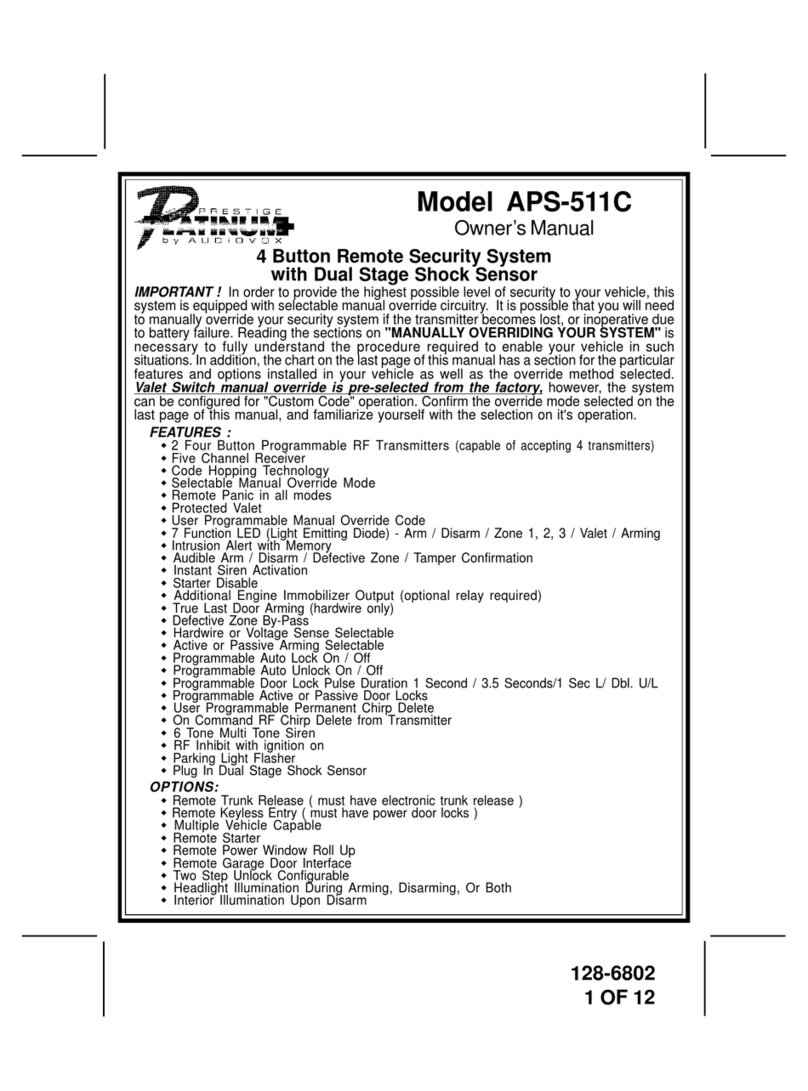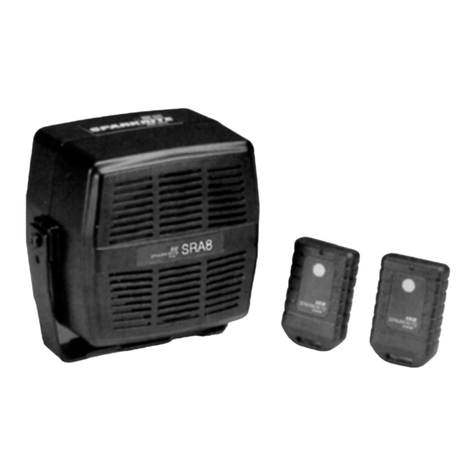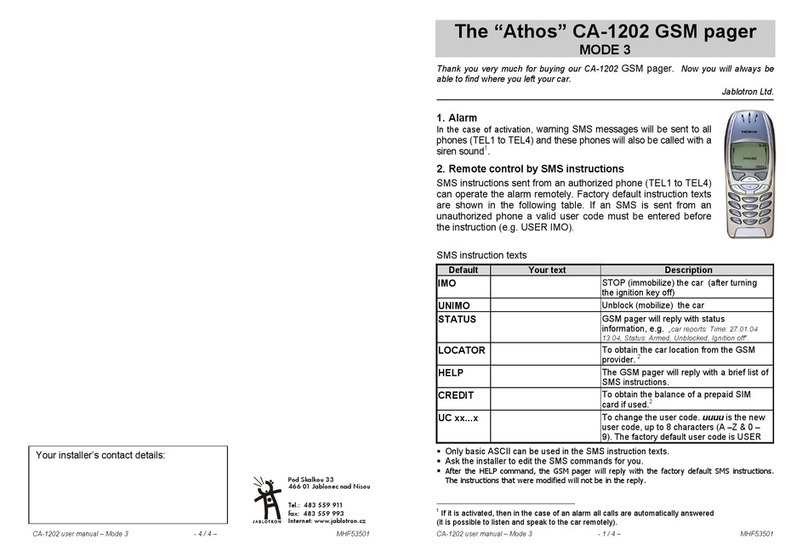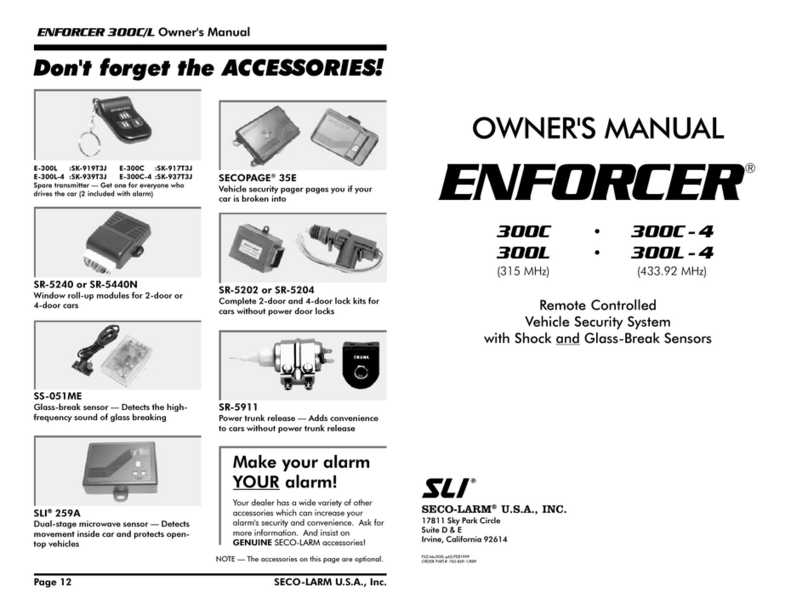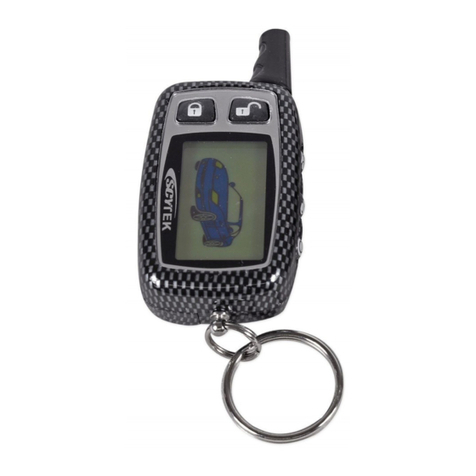Step 5: Installing the alarm siren
• Attach the alarm siren with the help of the two enclosed screws at
a suitable point on a random metal part of the vehicle; in this
process, attach the black ground cable of the siren between the
screw head and the metal holder of the siren. (Please do not
mount the siren near movable parts.)
• Then connect the power connection cable of the siren with the
power connection cable of the Cadillock®Alarm main device (both
cables are pink) and make sure that the transparent plastic
insulation sleeve (included in the scope of delivery) covers
the free metal pole clamps.
Step 6: Attaching the Cadillock®Alarm main device
• During the installation, please make sure that there is a suitable
possibility to attach the Cadillock®Alarm with the cable tie (see the
last section in this step 6).
• Pull off the cover foil of the adhesive tapes attached in the „prepa-
ration“ step in order to free the adhesive surface.
• Then place the Cadillock®Alarm on the battery surface or – if this
is more appropriate for your vehicle model – next to the battery
on the desired point and press the Cadillock®Alarm down on the
adhesive tapes for a few moments to achieve a secure hold.
• The Cadillock®Alarm is shock-proof; yet as an additional safety
measure, it is necessary to wind the enclosed plastic cable tie
around the Cadillock®Alarm main device and the car battery or
another possible attachment location and pull it tight.
• NOTE:
• The stable and solid connection of the Cadillock®Alarm is also nec-
essary since otherwise the shock sensor is unable to function with-
out errors. Therefore please ensure a stable and solid connection
to the vehicle. In addition, we recommend a regular control, since
the connection may loosen in exceptional cases during strong
shocks while driving, which may interfere with the functionality of
the Cadillock®Alarm.
9

